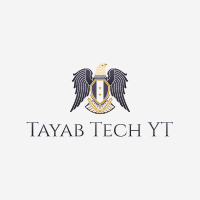Technical Writing 101: Understanding the Purpose and Scope of Technical Writing for Clear and Effective Communication
The article "Purpose and Scope of Technical Writing" provides an in-depth overview of the field of technical writing and its importance in today's technology-driven society. The article covers the key elements of technical writing including its purpose, scope, and techniques used to create clear and effective technical documents. The article also discusses the various career opportunities available in the field of technical writing and the growing demand for technical writers.
This article is perfect for anyone looking to understand the field of technical writing, whether you are a student, a professional or someone who is just curious about the subject. The information provided in this article is essential for anyone looking to improve their technical writing skills or to start a career in this field
Purpose and Scope of Technical Writing
Technical writing is a form of technical communication that is used to convey complex information to a specific audience in a clear and concise manner. The purpose of technical writing is to inform, instruct, and persuade readers about a specific topic or product. Technical writing can be used in a variety of fields, including science, engineering, technology, and medicine, and can take many forms, including manuals, reports, procedures, and instructions.
The scope of technical writing is broad, and it can be used in many different contexts. Some examples of the types of documents that technical writers may create include:
User manuals and guides for software or hardware products
Safety manuals and protocols for medical equipment or hazardous materials
Operating procedures for industrial or manufacturing processes
Technical reports and white papers on scientific or engineering research
Policies and procedures for government agencies or corporations
The target audience for technical writing is typically specialists or experts in a particular field, such as engineers, scientists, or medical professionals. Technical writers must have a deep understanding of their topic and audience in order to effectively communicate complex information in a clear and concise manner.
Importance of Technical Writing
Technical writing plays a critical role in today's fast-paced and technology-driven society. With the rapid advancement of science and technology, it is essential that complex information is communicated clearly and effectively to those who need it. Technical writing ensures that important information is understood by the intended audience, which can prevent errors and accidents, and increase productivity and efficiency.
Techniques and Tools used in Technical Writing
Technical writers use a variety of techniques and tools to create clear and effective technical documents. They must have a deep understanding of the subject matter and be able to translate complex information into language that is easy to understand. Technical writers also use specialized software, such as word processors, graphic design programs, and desktop publishing software, to create and format technical documents.
Career Opportunities in Technical Writing
Technical writing is a growing field with many career opportunities. Technical writers are in high demand in a variety of industries, including technology, engineering, science, and medicine. They may work for government agencies, corporations, or consulting firms, and can specialize in a particular industry or type of technical writing. With the increasing need for clear and effective communication of technical information, the demand for technical writers is expected to continue to grow.
In conclusion Technical Writing is an essential aspect of technical communication that is used to convey complex information to a specific audience in a clear and concise manner. It play a critical role in many different fields and its scope is broad, it has several techniques and tools used to create clear and effective technical documents and it has a good career opportunities.






0 Comments